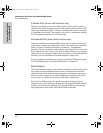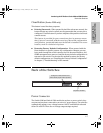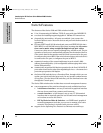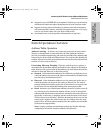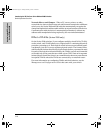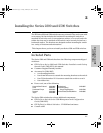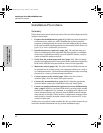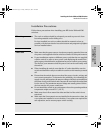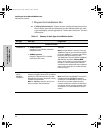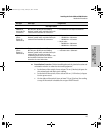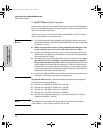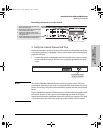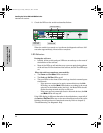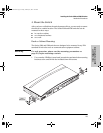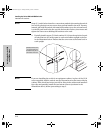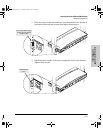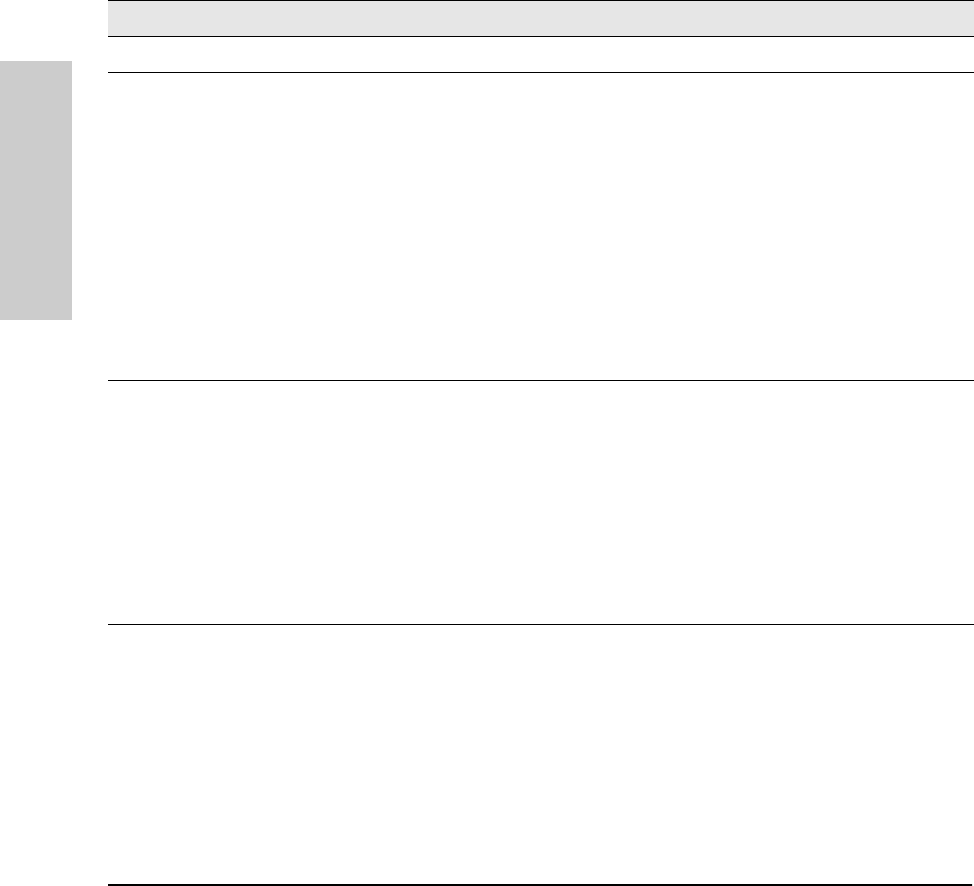
2-4
Installing the Series 2300 and 2500 Switches
Installation Procedures
Installing the Series 2300
and 2500 Switches
1. Prepare the Installation Site
■ Cabling Infrastructure - Ensure that the cabling infrastructure meets
the necessary network specifications. See the following table for cable
types and lengths, and see appendix B, “Cables and Connectors” for more
information:
Table 2-1. Summary of Cable Types to Use With the Switch
Port Type Cable Type Length Limits
Twisted-Pair Cables
10/100Base-TX • 10 Mbps operation:
Category 3, 4, or 5, 100-ohm unshielded
twisted-pair (UTP)
• 100 Mbps operation:
Category 5, 100-ohm UTP or shielded
twisted-pair (STP) cable.
100 meters
Note: Since the 10Base-T operation is through
10/100Base-TX ports, if you ever want to upgrade
the ports to 100Base-T, it would be best to cable
the ports initially with category 5 cable.
The 10/100-Base-TX ports on the Series 2300 and
2500 switches include the “HP Auto-MDIX”
feature, which allows you to use either straight-
through or crossover twisted-pair cables for
connecting to any network devices including end
nodes, such as computers, or to other switches,
hubs, and routers.
100/1000Base-T
(on the
100/1000-T
Transceiver)
For either 100 Mbps or 1000 Mbps operation:
Category 5 or better, 100-ohm UTP or shielded
twisted-pair (STP) balanced cable. For 1000
Mbps (gigabit) operation, Category 5E cabling
or better is recommended.
Note: For 1000 Mbps operation, all four wire
pairs are used for data transmission.
100 meters
Note: The HP ProCurve 100/1000-T Transceiver is
compatible with the IEEE 802.3ab standard
including the “Auto MDI/MDI-X” feature, which
allows you to use either straight-through or
crossover twisted-pair cables for connecting to
any network devices including end nodes, such
as computers, or to other switches, hubs, and
routers.
2353-ed2.book Page 4 Friday, February 9, 2001 6:00 PM



